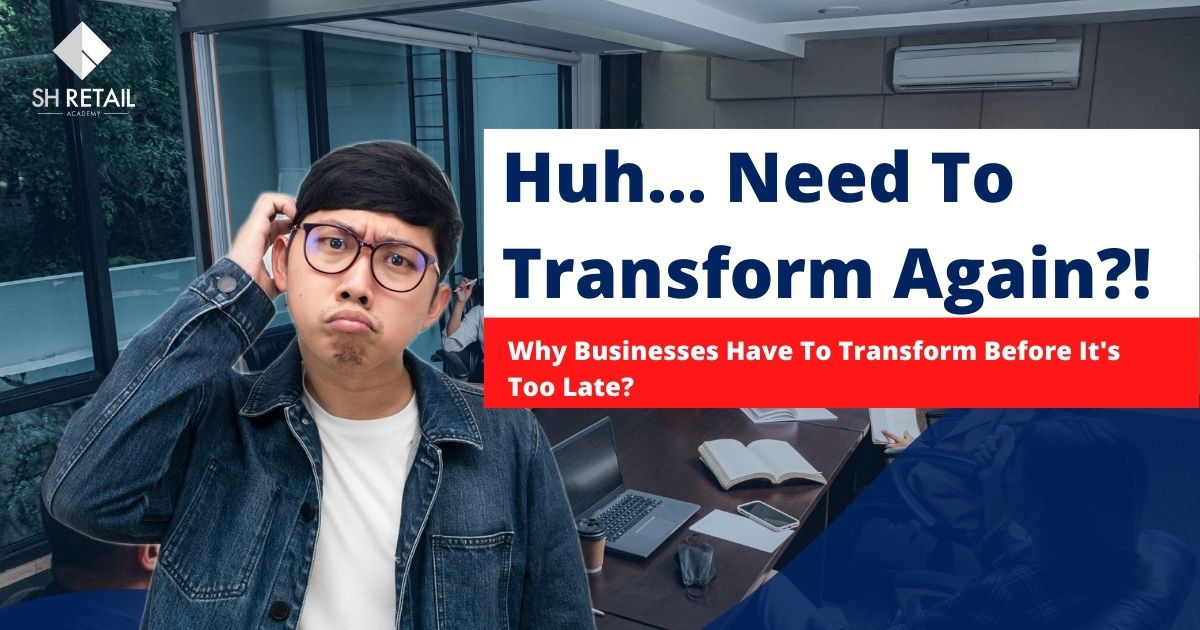For a company that was established in the 80s, Senheng remarkably manages to stay on the forefront of the latest technological advancements.
As the Founder and Chairman of Senheng Lim Kim Heng puts it: “embrace it or be left behind”.
In Chapter 8 of New Retail + New Platform, we get a glimpse of how Malaysia’s largest consumer electronics chain stays relevant with the rapid flow of technological change.
By embedding technology into the retail scene.
The retail industry, perhaps more so than many other industries, is largely led by technology.
The easiest way to visualise its role is to think of how you pay for in-store purchases nowadays - the contact-free option to pay cashless has become the default option for most.
But hold on! For more complicated, elaborate technologies such as Big Data or CDP, it doesn’t mean you have to incorporate every tech update just because your competitors have done so.
Lim cautions retailers to consider wisely if the new tech will be worth the investment, and how well it will incorporate into the current systems.
Deloitte and Ali Research Institute together have published a study on the “Six Major Changes in Science and Technology Reshaping the Retail Industry”. Retailers can use these six key points below as a basis for what to keep an eye out for.
1. Comprehensively data driven
Mastering the art of gathering, analysing and utilising data to optimise the entire value chain.
2. Popularisation of A.I.
A.I related technologies will be more prominent in the retail sector.
3. Cost reduction and efficiency
On demand cloud computing helps retailers immensely in analysing and collecting data - at low cost, time and labour.
4. In-depth integration
The demand and complexity of the marketplace may call for intensive coordination and integration of multiple technologies
5. Popularisation of applications
As technology continues on its upward journey, the maturity of today’s applications will only grow, along with the diversity of available applications.
6. Rapid convergence of innovation
Enterprise empowerment aside, technology is also reshaping the structure of management and its resources.
Utilizing Business Intelligence.
Senheng’s Business Intelligence (BI) system is one of the company’s biggest pride and joy.
Despite the costly and time-consuming efforts involved in setting it up, the system has yielded many fruits for the company.
The BI system that Senheng adopted covers analytics such:
- sales performance
- inventory management
- staff ratings
- freight planning
- automatic replenishment
Since 2004, the BI system has provided the company with valuable data to make the right decisions - propelling them year beyond their peers and onto the same playing field as international giants.
By embracing the O2O concept.
Brick-and-mortar or e-commerce? Given the choice to focus on just one, which avenue do you think would be more productive?
But why would you choose one when incorporating both is a completely viable business strategy?
The O2O concept stands for Online-to-Offline retail.
This strategy aims to utilise online marketing efforts to draw customers’ in-store to make physical purchases. This way, traditional brick-and-mortar businesses can benefit from an added “online” component, while e-commerce companies can establish a physical space of their own.
Amazon.Go, Alibaba Hema Grocery, JD.com, 7FRESH, Tmall, and Suning are just a few examples of online companies which by going offline as well, have embraced the O2O concept.
Closer to home, Senheng is one of the first Malaysian retailers to embrace the O2O
concept in Malaysia.
By synchronising online and offline marketing efforts.
To support the O2O concept, the Senheng team had to get creative with their marketing and advertising - and get creative they did!
Comparing Q1 2017 to Q1 2018, Senheng’s conversion rate from Facebook advertising alone increased from 0.22% to 0.37%. The actual revenue increased from RM52,000 to RM160,000.
The company continued its uphill trajectory with Q2, when the conversion rate increased from 0.18% to 0.32%, while the revenue went from RM66,000 to RM188,000!
A few ways Senheng did this is by:
- Using data from Facebook to map the correlation between online and offline consumption
- Using Facebook’s location tracking function to convert foot traffic into sales of specific branches
- Formulated relevant advertising strategies based on real-time weather and temperature data (pushing water heaters in rainy areas, and air purifiers during hazy weather etc.








